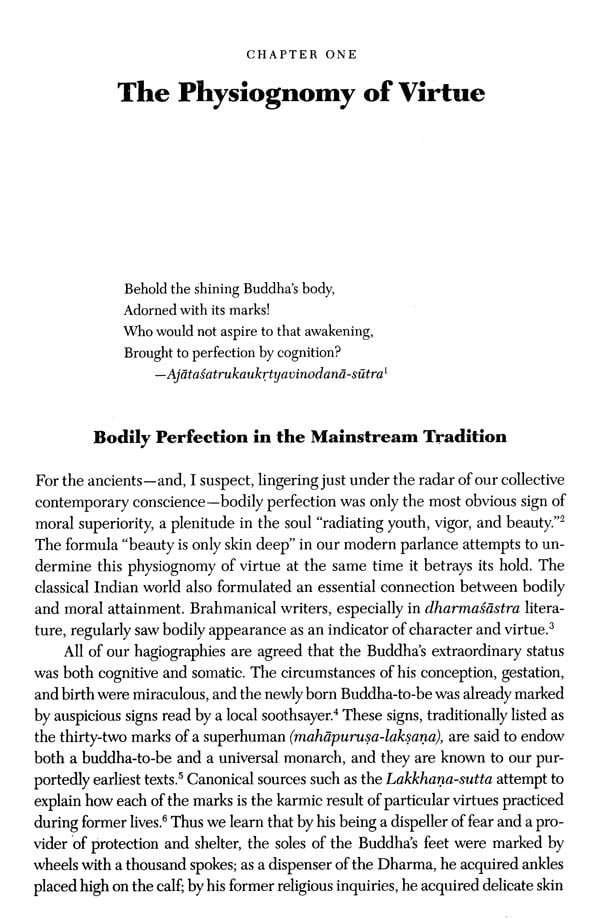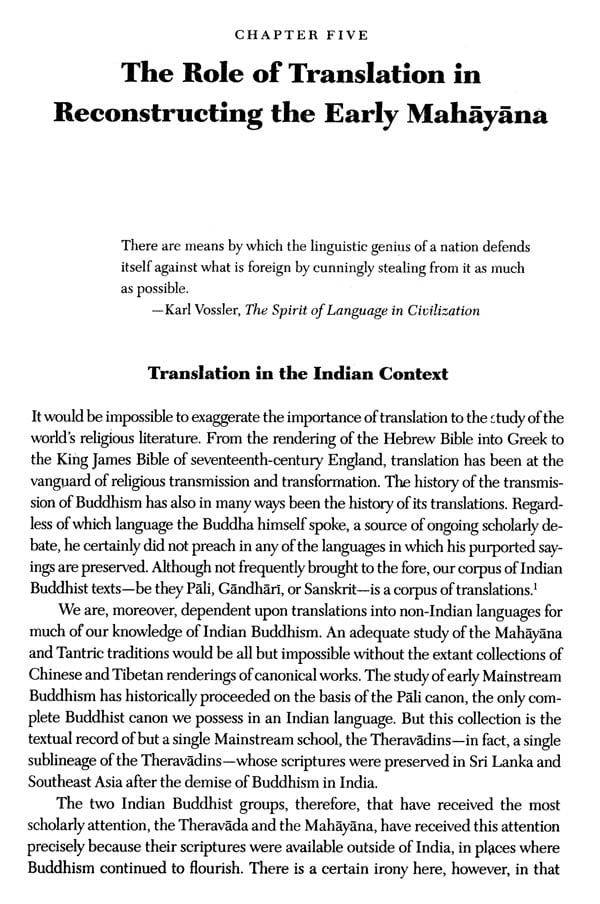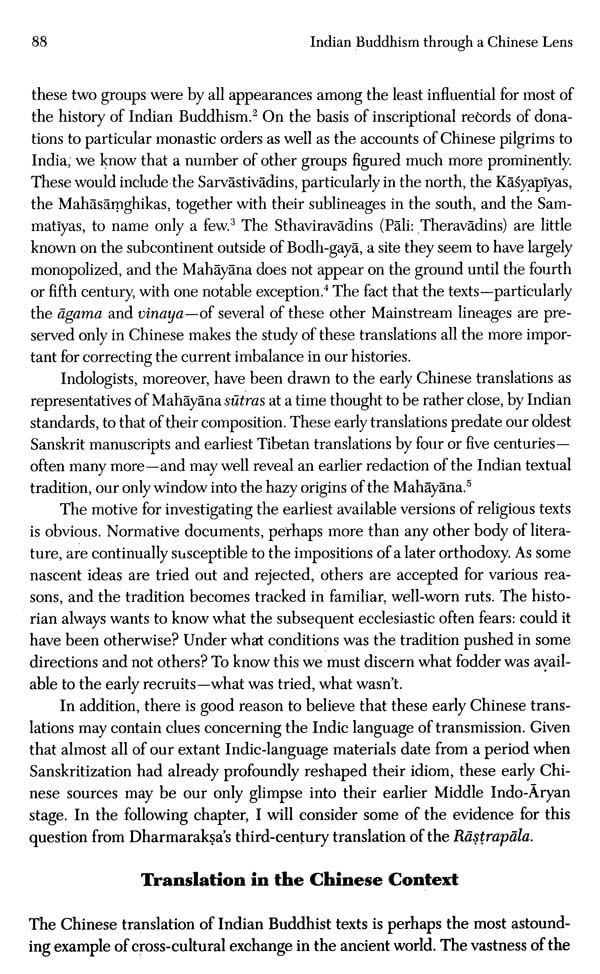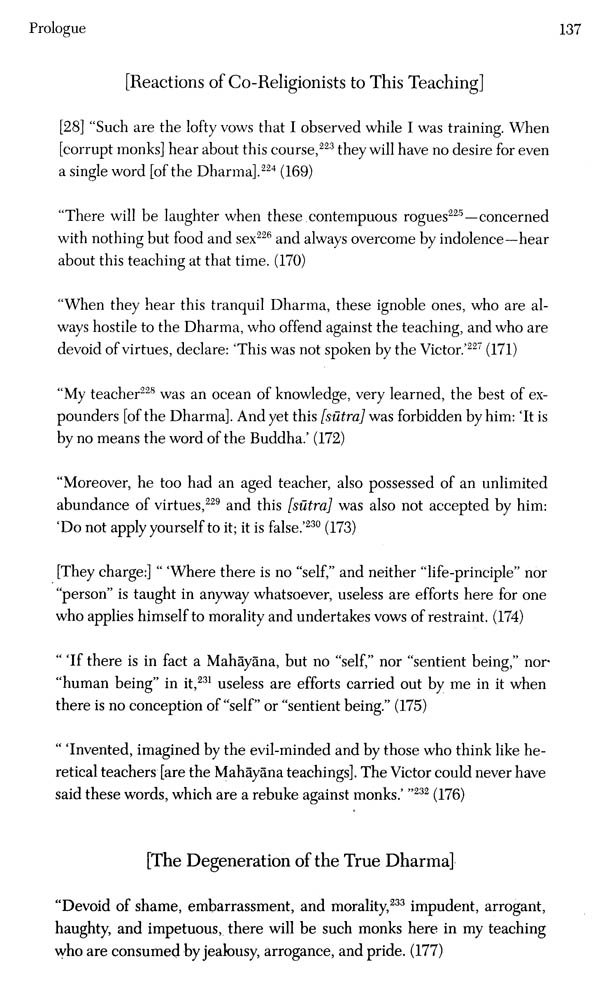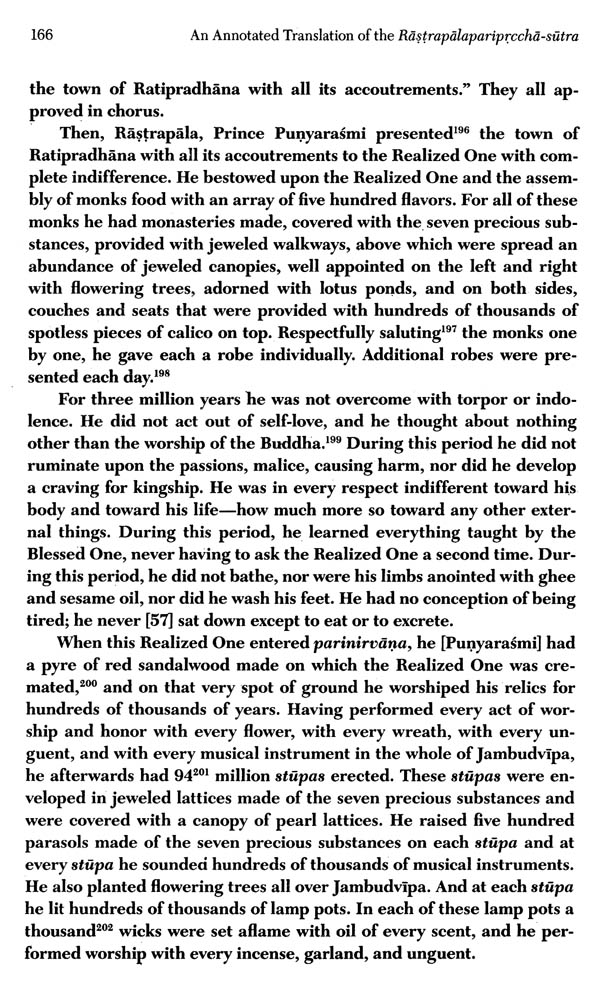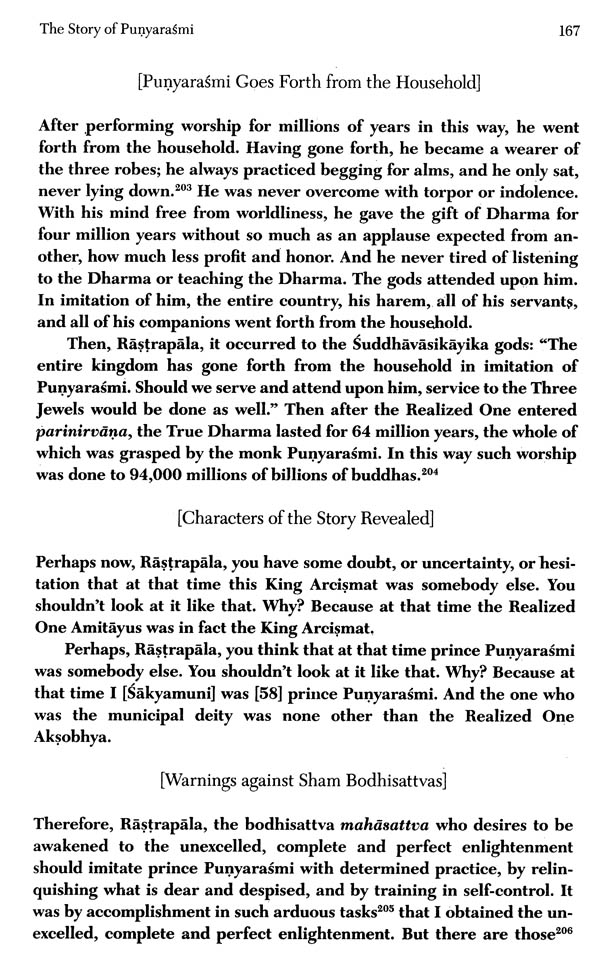
Bodhisattvas Of The Forest and The Formation of The Mahayana -A Study and Translation Of The Rastrapalapariprccha Sutra
Book Specification
| Item Code: | NAW676 |
| Author: | Daniel Boucher |
| Publisher: | Motilal Banarsidass Publishers Pvt. Ltd. |
| Language: | English |
| Edition: | 2011 |
| ISBN: | 9788120834231 |
| Pages: | 288 |
| Cover: | HARDCOVER |
| Other Details | 9.00 X 5.50 inch |
| Weight | 510 gm |
Book Description
Bodhisattvas of the Forest delves into the socioreligious milieu of the authors, editors, and propagators of the Rastrapalapariprccha-sutra (Question of Rastrapala), a Buddhist text circulating in India during the first half of the first millennium C.E. In this meticulously researched study, Daniel Boucher first reflects upon the problems that plague historians of Mahayana Buddhism, whose previous efforts to comprehend the tradition have often ignored the social dynamics that motivated some of the innovations of this new literature. Following that is a careful analysis of several motifs found in the Indian text and an examination of the value of the earliest Chinese translation for charting the sutra's evolution.
The first part of the study looks at the relationship between the bodily glorification of the Buddha and the ascetic career-spanning thousands of lifetimes-that produced it within the socioeconomic world of early medieval Buddhist monasticism. The authors of the Rastrapala sharply criticise their monastic contemporaries for rejecting the rigorous lifestyle of the first Buddhist communities, an ideal that, for the sutra's authors, self-consciously imitates the disciplines and sacrifices of the Buddha's own bodhisattva career, the very career that led to his acquisition of bodily perfection. Thus, Boucher reveals the ways in which the authors of the Rastrapala co-opted this topos concerning the bodily perfection of the Buddha from the Mainstream tradition to subvert their co-religionists whose behavior they co-religionists whose behavior they regarded as representing a degenerate version of that tradition.
In part 2 Boucher focuses on the third-century Chinese translation of the sutra attributed to Dharmaraksa and traces the changes in the translation to the late tenth century. The significance of this translation, Boucher explains, is to be found in the ways it differs from all other witnesses. These differences, which are significant, almost certainly reveal an earlier shape of the sutra before later editors were inspired to alter dramatically the text's tone and rhetoric. The early Chinese translations, though invaluable in revealing developments in the Indian milieu that led to changes in the text, present particular challenges to the interpreter. It takes an understanding of not only their abstr4use idiom but also the process by which they were rendered from an undetermined Indian language into a Chinese cultural product. One of the signal contributions of this study is Boucher's skill at identifying the traces left by the process and ability to uncover clues about the nature of the source text as well as the world of the principal recipients. Bodhisattvas of the forest concludes with an annotated translation of the Rastrapalapariprccha-sutra based on a new reading of its earliest extant Sanskrit manuscript. The translation takes note of important variants in Chinese and Tibetan versions to correct the many corruptions of the Sanskrit manuscript.
DANIEL BOUCHER, who received his doctorate from the University of Pennsylvania, is currently an associate professor of Sino-Indian Buddhism in the Department of Asian Studies at Cornell University. His work focuses on the earlier phases of the cluster of traditions typically referred to as the Mahayana, which emerged in India around the turn of the Common Era. He is also interested in the transmission of this movement to China in the first few centuries C.E., particularly with regard to the use of the early Chinese translations for charting changes in the tradition over time. Several of his previous publications have drawn attention to the importance of Gandhara and the Gandhari language in this transmission process.
The study of the collection of Buddhist movements known as the Great Vehicle is in need of some methodological direction. It seems to me there have been enough general theories of its origins. Some, particularly Japanese, scholars have seen a lay-centered development in the texts, a pseudo-Reformation against monastic elitism. Others see it as riding the wave of bhakti devotionalism sweeping across India at the turn of the Common Era-as if Hindus and Buddhists alike suddenly discovered that the gods were open for business. Still others have emphasized the philosophical innovations of the Mahayana and its seeming tendency to carry certain early doctrines to their logical conclusion. These theories-and many more-have been spun now by multiple generations of scholars.
When we begin to catalogue the things we don't know concerning the origins of the Mahayana, the list quickly becomes daunting. Unlike scholars of, say, early Christianity, we have little idea as to which social classes were drawn to this movement. We don't know, for example, what really to make of the prominent presence of the figure of the grhapati-usually translated as householder, but almost certainly a man of considerable means, perhaps a guild master-in early Mahayana sutras such as the Ugrapariprccha. Does the presence of such an interlocutor indicate that the Mahayana had a strong initial appeal to wealthy members of Indian society, or was their narrative role more a form of advertising, an attempt to draw such individuals toward a movement desperately in want of patronage?
We do, however, have some sense that a number of individuals who aligned themselves with the various Mahayanas throughout much of its early and middle history perceived themselves as reviled by their Mainstream monastic brethren.' But we often have little sense of how Mainstream monks themselves regarded their co-religionists on the bodhisattva path or if they regarded them at all. Moreover, did non-Buddhists take note of such divisions, or were these multiple spiritual orientations invisible to outsiders, in much the same way ancient Romans regarded first-century Christianity as a "Jewish disturbance"? Indeed, when we come to grips with the range of questions our classicist colleagues can ask and often answer with regard to the birth of Christianity and its domestication within the Roman empire, it is easy to become mildly demoralized at our situation as historians of the Mahayana. Only recently have we begun to catch glimpses of hope that a way out of this morass may be at hand. This project is an attempt to pick up some of the current momentum in early Mahayana studies and to identify a set of threads that manifest themselves as an interdependent skein of influences upon a single text within this literature.
Much of the recent scholarship on the early Mahayana points to a tradition that arose not as a single, well-defined, unitary movement, but from multiple trajectories emanating from and alongside Mainstream Buddhism. Whether we focus upon developments of ascetic rigor, the apotheosis of the Buddha or buddhas, or the virtues of dana (gifting, generosity), in almost every instance we see continuity from early Buddhism to multiple Mahayana developments.
In fact, there is good reason to believe that the spiritual orientation of monastics was in some sense independent of their institutional affiliations. So, for example, membership in a Dharmaguptaka monastery may in itself say nothing about any given individual's beliefs or practices apart from conforming to certain disciplinary regulations. It may have been relatively easy in some cases for a small group of monks to congregate around a common text or ritual agenda apart from their co-religionists. Mainstream monks in some monasteries may well have reacted with indifference to the bodhisattva aspirations of some of their brethren, whereas others-as evidenced by the scathing critiques recorded by some Mahayana authors (including those of the Rastrapala)-would have been far less sympathetic. Different communities responded to different concerns, not the least of which may have included their own sense of the perceptions and expectations of their most loyal donors.' Texts and inscriptions both make clear that patronage was never far from the minds of monks of all periods.
Perhaps our most pressing desideratum, therefore, is to conceive an appropriate model with which to think about the complex of traditions we have come to lump under the label "Mahayana." Here a comparison with other new religious movements may be helpful, especially in fields more thoroughly worked or in possession of richer sources. I think in this regard particularly of Mormonism, an analogy I owe to my colleague Jan Nattier. Here we have a tradition whose formation is relatively recent and therefore well documented. It presented itself as a new revelation that did not replace but completed the existing scriptures. Like the bodhisattva career, the spiritual path of the Latter-day Saints is conceived of as a multilife process aimed at the eventual apotheosis of all male members. And, as with the Mahayana, the Latter-day Saints have had a complicated relationship with the mainstream.
For example, much of the early appeal of converts to Joseph Smith's new movement was "to its allure as a form of primitive Christianity."' Early Mahayana texts too often implicitly characterized themselves as a restoration of the Buddha's original message, which a corrupt sangha had long since lost. One of the problems, however, with the scholarship on the early Mahayana is that it typically treats this movement as an established fact. But if the authors of the Rastrapala are to be believed, it would appear that their Mainstream contemporaries did not. That is to say, much ink was spilled in defending the status of early Mahayana sutras as buddhavacana (the word of the Buddha). Some accepted them, some did not. The interesting question for us then is this: why would someone accept an (obviously?) new sutra as the word of the Buddha? Just as the early Mormons preached largely from the King James Bible in winning new converts,' the authors of the Rastrapala strategically borrowed from the idiom of pre-Mahayana sources, including some of the earliest texts in the Buddhist canon? It is not unlikely that this was intended to impart an archaic aura to the text that would have disguised their role in its production.
Joseph Smith and his first disciples are known to have been desperately impoverished. Those drawn to him and his new revelation often shared a deep resentment against the well-to-do and, particularly, against the unresponsiveness of the religious establishment. Smith's message explicitly addressed these dissatisfactions. Consider the following passage from the Book of Mormon:
Because of pride, and because of false teachers, and false doctrines, their churches have become corrupted, and their churches are lifted up; because of pride they are puffed up.
They rob the poor because of their fine sanctuaries; they rob the poor because of their fine clothing; and they persecute the meek and the poor in heart, because in their pride they are puffed up.
These verses would fit squarely in the Rastrapala with only cosmetic adjustments. We might wonder then if the authors of the Rastrapala also suffered from economic impoverishment. We know that they assumed that some of their fellow monks left the household merely to escape poverty: "They will receive rebirth in poor families on account of their undisciplined practice. Becoming renunciants from these poor families, they will take satisfaction in the teaching at this time only for the sake of profit."" Were their complaints about their brethren's preoccupation with profit and honor a barely masked envy? Were those drawn to this bodhisattva network likewise disenfranchised? If so, we would expect that the leaders of this group would have to have offered an alternative commodity to attract those deprived of the rewards enjoyed by their more affluent co-religionists. I will attempt to show that the Rastrapala provides evidence of just such a promise.
To make one final comparison: the capacity for individual revelation, encouraged in the early days following Joseph Smith's divinely appointed mission, proved to be divisive. If every male member of the church can and should receive his orders directly from God, why would such an individual submit to commands mediated by church officials? Despite his later attempts to rein in his flock and restrict prophecy, Joseph Smith had let the genie out of the bottle." In so doing, he precipitated the eventual emergence of over two hundred Mormon splinter groups, many of which acted with an authority that in every way paralleled the one claimed by Smith himself." Might not the proliferation of Mahayana sutras be a similar phenomenon? Individual monks came to see themselves as empowered to speak for or, more literally, to speak as the Buddha. Whether they did so on the authority of an ecstatic experience that brought them into direct association with a living buddha or by means of other secret transmissions, each new Mahayana sutra embodied in some sense a new vision and a new movement. Once the floodgate was opened, the production of a massive literature containing new "revelations" was sure to follow.
These are the kinds of questions that inform this study. Accordingly, I am first and foremost interested in the Mahayana as a social phenomenon rather than as a philosophical school. To this end, we need to think like scholars of the Latter-day Saints, not scholars of the Yogacara- of Hare Krishnas, not Nagarjuna. Thus my analysis will attempt to address what Weber has called the "economic ethic" of religion. Rather than being interested primarily in the "ethical theories of theological compendia," .I will focus on "the practical impulses for action which are founded in the psychological and pragmatic contexts of religions."" I will want to know, for example, about the processes of group formation and self identity: what accounts for the predisposition of some monks to accept the bodhisattva path-along with its doctrinal innovations, cosmology, and cults-as opposed to other forms of protest? How did members congregate and maintain relationships with both insiders and outsiders? Could a monk participate in a bodhisattva network in plain view of his monastery's elders? And when the monastery's elders did not approve, what was the source of their opposition? Our texts seldom speak directly to these questions. But as in all academic enterprises, the hard part is getting the questions right in the first place.
The Rastrapala, however, will not be reduced to a mere expression of its social situation. Functionalist approaches have been rightly criticized for their tendency toward chronological compartmentalization and circular reasoning and for their inattentiveness to the content of religious discourse. Certainly Buddhist studies has historically concerned itself-almost exclusively in many cases-with doctrine and polemics. Scholars of Buddhism have until quite recently been less sensitive to the social dynamics that precede ideology. This study seeks to address this imbalance, to show that the rhetoric of the Rastrapala itself calls for an analysis that lays bare its disguised forms of exchange.
**Contents and Sample Pages**


